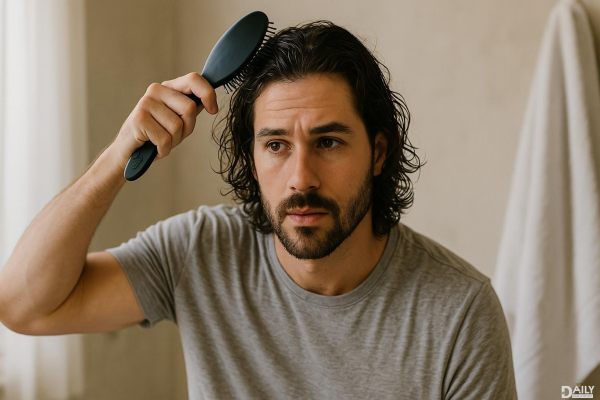If you're still using that old plastic comb or whatever random brush you grabbed from the drugstore, you're missing out on the game-changing benefits of a wet brush—especially one designed for men. A high-quality wet brush isn't just another grooming tool; it's a secret weapon for healthier hair and a happier scalp. Unlike traditional brushes that tug, snag, and cause breakage, a wet brush glides through damp or dry hair with minimal resistance, reducing damage while stimulating blood flow to the scalp. And yes, guys, this matters—whether you're rocking a buzz cut, a man bun, or anything in between.

Most men don’t think twice about their hairbrush—until they start noticing more hair in the drain or an itchy, irritated scalp. Cheap plastic brushes with stiff bristles create friction, leading to split ends, breakage, and even premature thinning. And if you're brushing wet hair (which is at its most vulnerable), you're basically asking for trouble. A wet brush, on the other hand, features ultra-soft, flexible bristles that detangle without aggression. The design distributes tension evenly, so you're not yanking out strands by the root. Plus, the gentle massaging action boosts circulation, which can encourage healthier hair growth over time.
Brushing isn’t just about styling—it’s a crucial part of scalp health. When you brush correctly, you’re helping to distribute natural oils (sebum) from your roots to your ends, which keeps hair hydrated and less prone to frizz or dryness. A wet brush enhances this process because its flexible bristles adapt to your hair’s texture, whether it’s curly, thick, or fine. Research also suggests that regular scalp stimulation can improve follicle function, potentially leading to thicker, stronger hair. So, if you’ve been skipping the brush altogether or using the wrong one, you might be sabotaging your hair’s potential.
First rule: Always start from the ends and work your way up. This prevents unnecessary tugging and makes detangling way easier. If your hair is wet, gently blot out excess moisture with a microfiber towel before brushing—never go at sopping-wet hair aggressively. For extra scalp benefits, use slow, circular motions to boost blood flow. And don’t overdo it; brushing too much can cause mechanical damage. A few strokes in the morning and at night (to redistribute oils) is plenty. Pro tip: If you use hair products, a quick brush-through before washing helps remove buildup.
Not all wet brushes are created equal. Look for one with a mix of bristle types—softer ones for detangling and slightly firmer ones for scalp stimulation. A vented design helps air circulate if you’re blow-drying, and an ergonomic handle makes it easier to grip. Some models even come with antimicrobial properties to keep bacteria at bay, which is great if you’re prone to scalp issues. And if you’ve got longer hair, opt for a brush with a wider surface area to cover more ground without repeated strokes.
Switching to a wet brush might seem like a small change, but your hair (and scalp) will thank you. Less breakage, better moisture balance, and improved circulation add up to hair that looks and feels healthier—without any extra effort. So ditch that old comb and upgrade your grooming routine. Your future self will high-five you every time you look in the mirror.
























